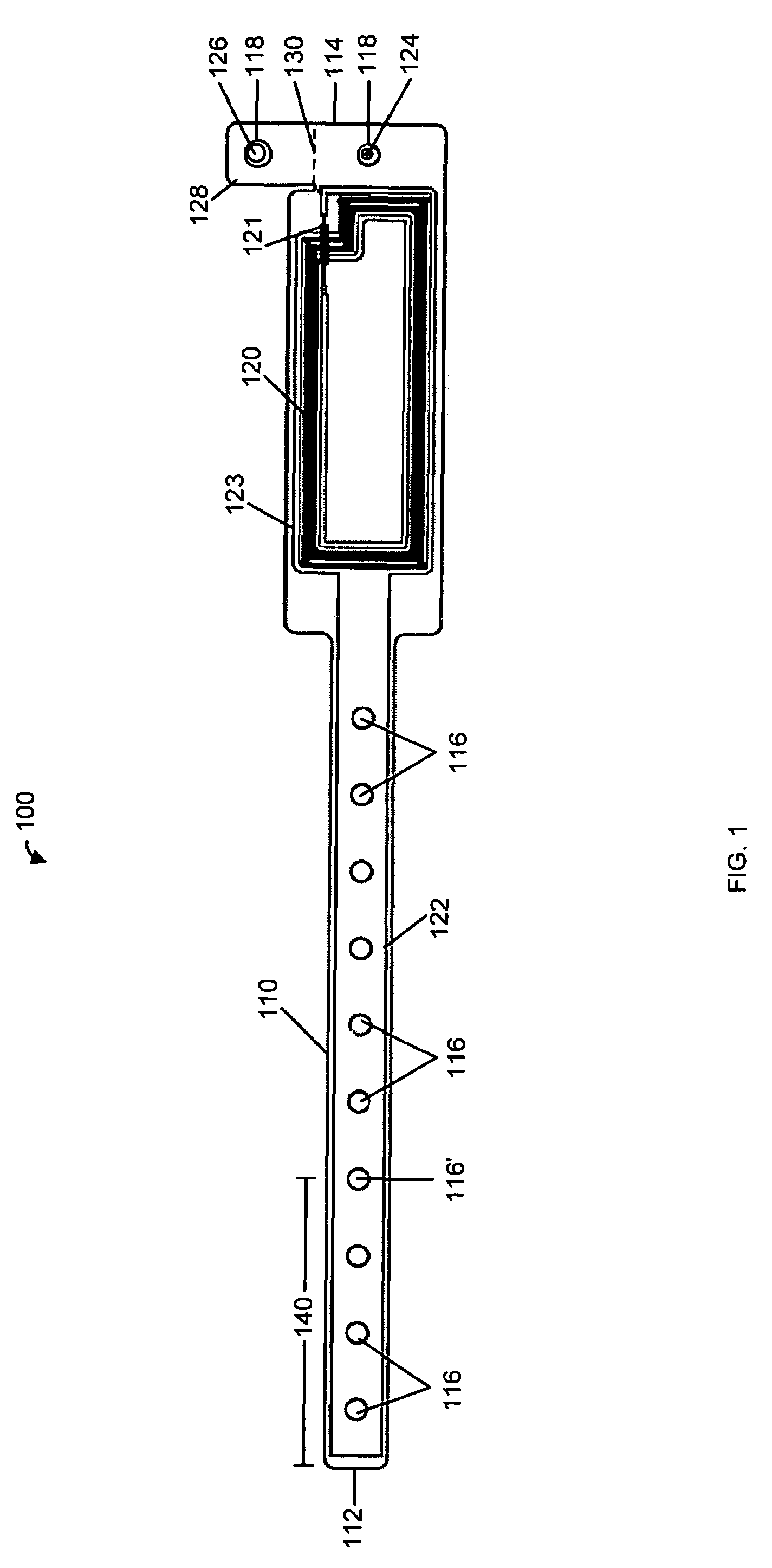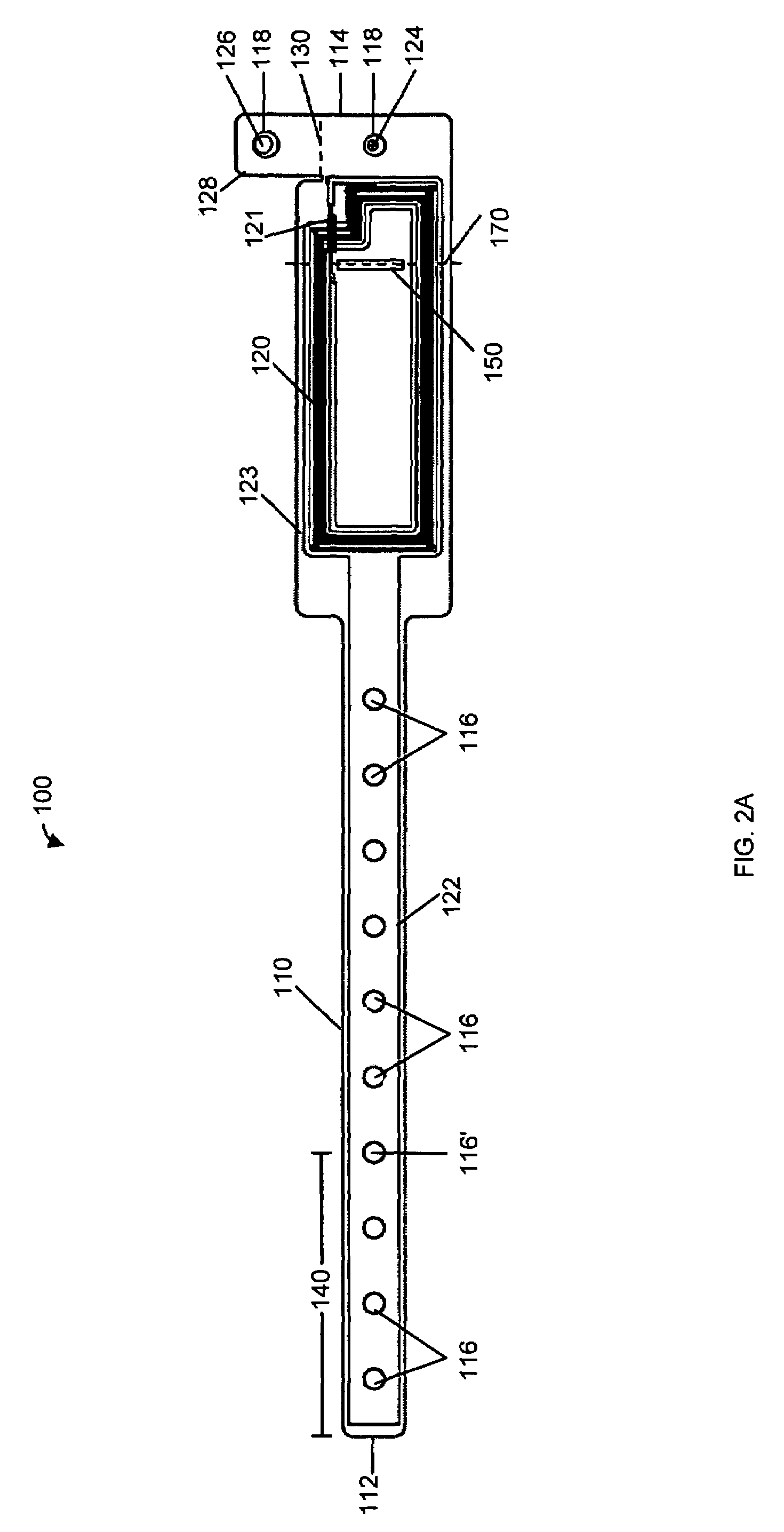Tamper-resistant RFID disabling apparatus
a technology of rfid and disabling equipment, which is applied in the direction of identification means, instruments, computing, etc., can solve the problems of destroying the tail portion of the bracelet, affecting the wearer's daily activities and movements, and affecting so as to achieve the effect of reducing the durability of the apparatus and not destroying the functionality of the rfid
- Summary
- Abstract
- Description
- Claims
- Application Information
AI Technical Summary
Benefits of technology
Problems solved by technology
Method used
Image
Examples
Embodiment Construction
[0017]A description of preferred embodiments of the invention follows.
[0018]Generally, passive radio frequency identification (RFID) bracelets include transponder circuits containing an antenna and other additional circuitry that respond to an RF interrogation signal. The additional circuitry is typically provided as a single integrated circuit transponder chip. However, other embodiments are possible, including, for example, an integrated circuit transponder chip incorporated with an external capacitor. In response to the RF interrogation signal, the transponder emits an RF signal representative of information pre-stored or pre-programmed into the transponder. For example, the information could include a serial number, the date the bracelet is issued, the date the bracelet expires and will no longer be usable for access, the age status of the wearer, and / or whether the bracelet can be used for purchasing goods or services. Any other desired information, depending on the context in ...
PUM
 Login to View More
Login to View More Abstract
Description
Claims
Application Information
 Login to View More
Login to View More - R&D
- Intellectual Property
- Life Sciences
- Materials
- Tech Scout
- Unparalleled Data Quality
- Higher Quality Content
- 60% Fewer Hallucinations
Browse by: Latest US Patents, China's latest patents, Technical Efficacy Thesaurus, Application Domain, Technology Topic, Popular Technical Reports.
© 2025 PatSnap. All rights reserved.Legal|Privacy policy|Modern Slavery Act Transparency Statement|Sitemap|About US| Contact US: help@patsnap.com



